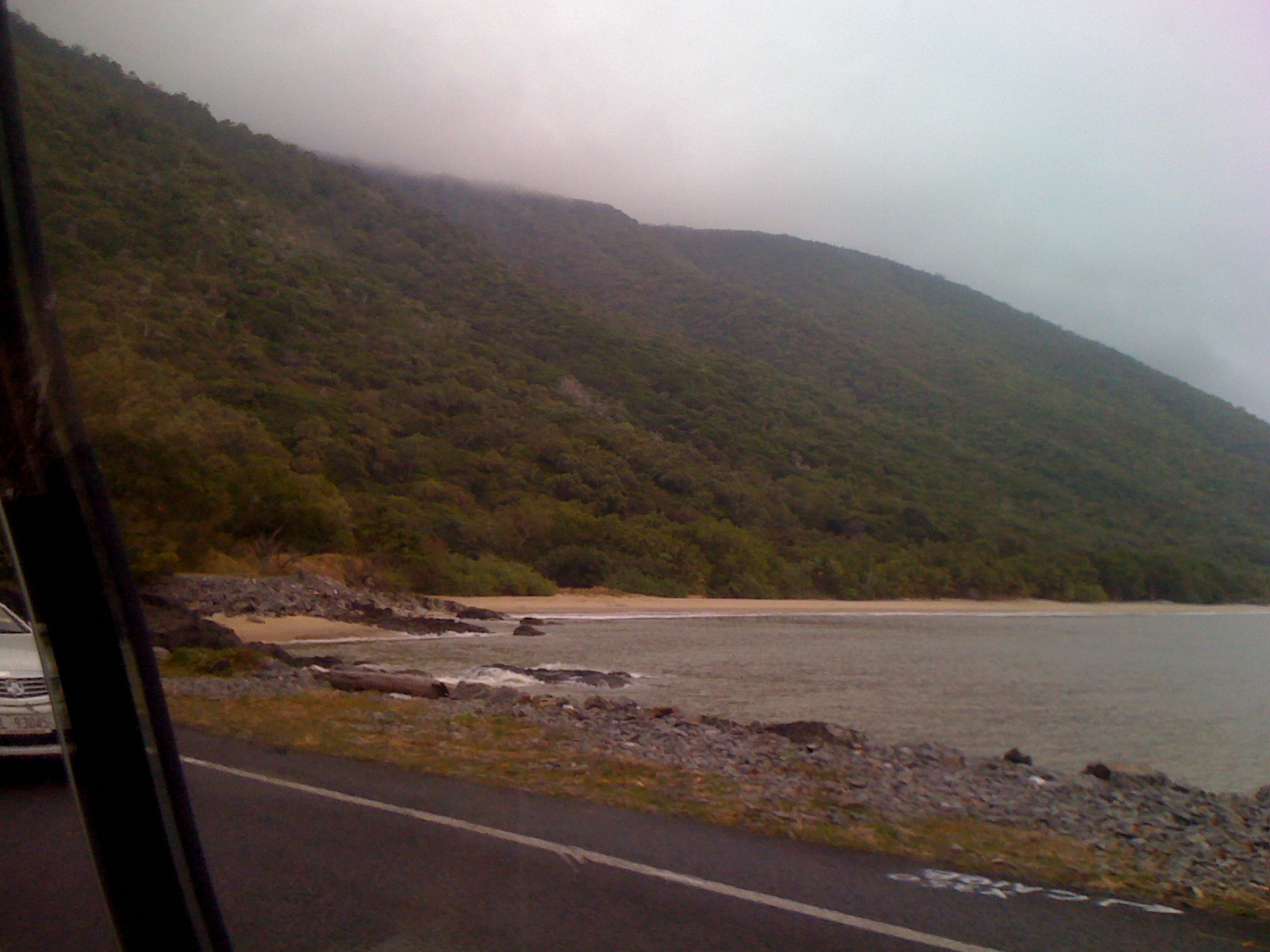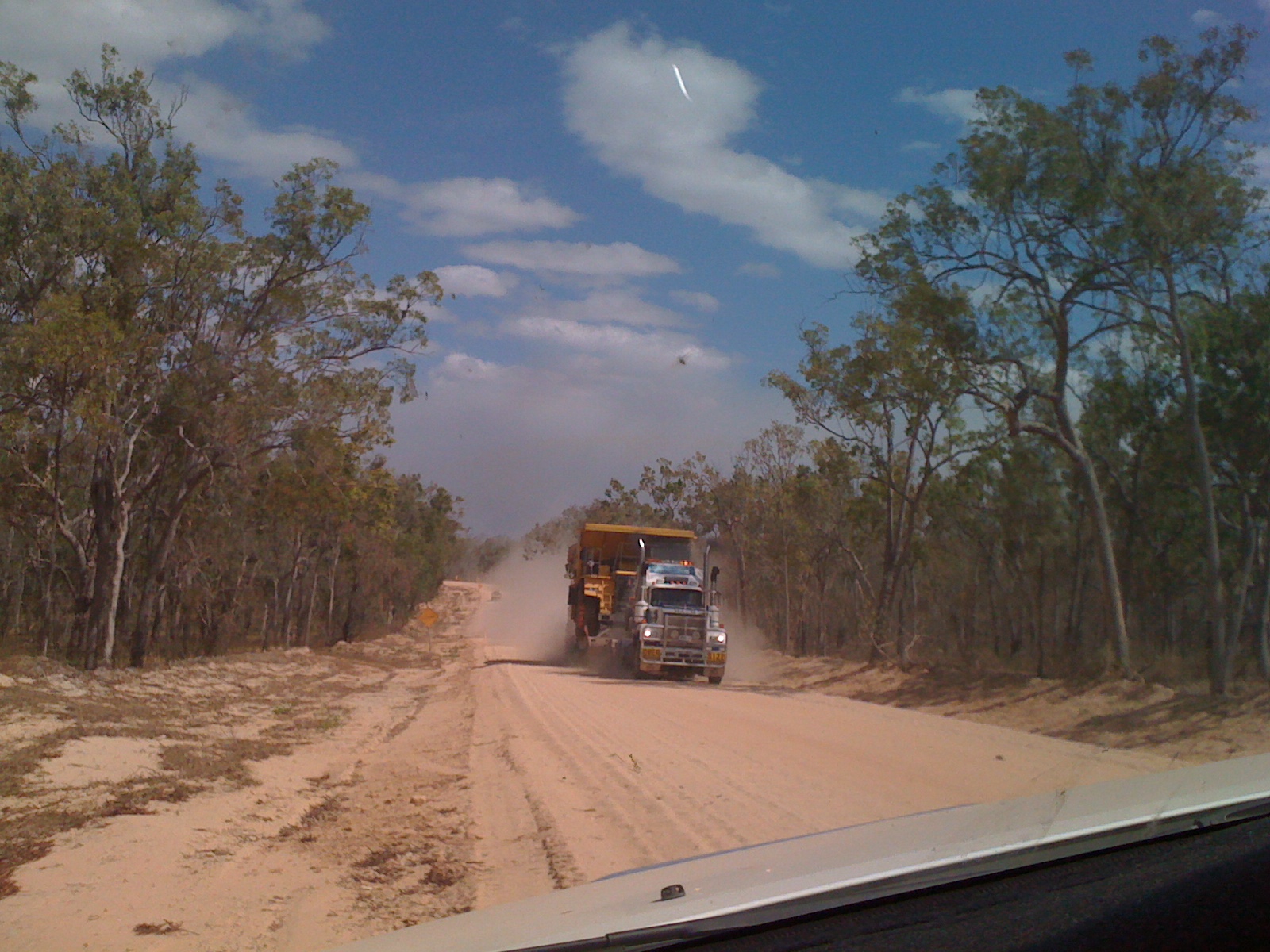
|
A FEW DAYS AGO I COMMENTED HERE THAT I WAS FEELING A LITTLE JADED AFTER ARRIVING IN FAR NORTH QUEENSLAND (FNQ) FOR MY THIRD VISIT IN 18 MONTHS, AND WAS WORRIED THAT I HAD EXHAUSTED MY CAPACITY TO FIND ENTERTAINMENT AND INTEREST IN THE REGION. A little bit later, over at Google +, I noted that FNQ seemed to be suffering from a downturn in the tourist industry, a possibly permanent nosedive. Meals at the pubs seemed smaller and more generic, and free breakfasts at our resort now costed AUS$5.50 (for toast and cereal!), in an attempt to dissuade long-termers from abusing their privleges. Flimsy evidence to go upon, but I know a downturn when I smell one, or taste one! My old watering hole the Blue Sky Brewery has closed down... that's as sure a sign as any! I've read that arrivals at Cairns International Airport fell from a record high of 1.2 Million in 2006, to 550,000 in 2009. This year (2012/13), 750,000 arrivals are expected, thanks to the booming Chinese sector. Queensland is a state with a two-speed economy, and areas like Cairns have a skills surplus... I saw that in the Australian. Of course, talk of a tourist slump in Queensland is nothing new, and you would expect the Australian high dollar to have a dampening effect, but I think the industry's woes are more systemic, even cultural. Go to any resort or hotel in Cairns, for example, and you will get bombarded with brochures advertising activities like sky diving, bungee jumping, or even tours which combine them (dive on a reef, and then a helicopter which zoom you inland to a waiting bungee rope. That's cool and all, but I can't help but feel there is something tacky about focussing on this style of tourism, especially considering the real and untamed beauty of the environment here. There seem to be too many brochures for horse riding tours on the beach, and not enough brochures just about the beach. Do you really need to jump out of an aeroplane on the reef, to appreciate the reef? You can jump up out of planes anywhere in the world, but real coral reefs are relatively rare (and getting rarer). I can sense something depressingly Australian in this focus on the high octane, perhaps even a glimpse of the Cultural Cringe. It is the same kind of mentality which erected the Big Banana. In a part of the world which brims with real world colour and culture (indigenous, pioneer European, Asian), there is a tendency to cover it all over with fakery. That's what happened in Kuranda, and that also seems the fate to have befallen Port Douglas, the celebrated resort town north of Cairns, which I have visited today... (To read my complete post on Port Douglas, click here.)
 Monday, January 16, 2012 Cattle Station Hopping, in Cape York Peninsula, Queensland
Saturday, September 17, 2011Cape York Peninsula: One Last Refuge of the Classic AustralianI just got back from a six-day jaunt through Cape York peninsula in far north Queensland, and was amazed to discover a refuge where the traditional Australian still lived on. Going up there is like taking a trip back in time, to the pioneer days of the 1800s, where nature and man lived side by side. Granted, these days the inhabitants of the Cape have satellite phones and air-conditioning and high-powered cars, but in many ways they live the oldfashioned way. The Nanny State hasn't penetrated that far north, and probably never will. White folk there will scoff at concepts like racism and multiculturalism, yet they have more Aboriginal friends than any "politically correct" southerner does. Spending time in the Cape confirmed my suspicions that political correctness was just another, more ultimate form of racism. One won't talk about the disappearance of the Aborigine from modern life, to absolve oneself of guilt for his extermination - that for me is political correctness. Cape York offers a glimpse of Australia when black and white lived together, not exactly in harmony but at least in daily contact. The way both races interact reveals how the modern white Australian evolved, away from his British/Irish roots. My guide around the Cape, for example, frequently made deragatory remarks about Murris (the native Queensland peoples), the kind that would earn you instant censure in Sydney in Melbourne. On the other hand, he claimed to have spent years working in remote regions with Murris, "all of them good men." Listening to him talk, I could not help but notice the strange Aboriginal cadences in his speech, the rolling rrrrr's, the Murri rythyms. It occurred to me that if he had spent much of his life living with black people, he couldn't have helped pick up some of their culture and lingo. If it happened to him, it probably happened to all of the pioneer Australians.
Writer and feminist Germaine Greer claims in her book, Whitefella Jump Up: The Shortest Way to Nationhood  SUSHI WITH NAMES LIKE VOLCANO ROLL, SPIDER ROLL AND DYNAMITE ROLL (THE LATTER BOASTING PIECES OF TENDER RAW TUNA AND A SMEAR OF CHILI SAUCE (according to a review of the Kobe Jones restaurant in Sydney by Not Quite Nigella)). Wagyu beef which isn't actually wagyu and never could be. Sashimi in shot glasses. Wagyu beef paddies on hamburgers (this was reported by Chocolate Suze.) Mayo in sushi restaurants. I know the Japanese have an abusive relationship with mayonaise, but they would never mix it up with sushi! Nor would they ever put sashimi in a shot glass. In the Japanese scheme of things, shot glasses are for shots and sashimi is supposed to be served on a plate! Why is it that when Australians try to show how sophisticated they have become, they usually overreach? The Cultural Cringe 2.0. SO, WHAT ARE AUSTRALIANS LIKE? Australians have typically been described as laconic, egalitarian, rugged, no-nonsense, down-to-earth types obsessed with sport but uneducated in the more refined arts of civilization. There may be truth to the cliche, but as with any cliche, it can only describe one layer of the truth. And the whole idea of the UNCLONED WORLD website is to show that there are many layers to reality, each piled on top of another onion-style. In order to understand the Australians, you have to understand where they can from. As I wrote on the previous page, there have been four principal migrations of humans into Australia. The first three were Aboriginal waves, and the fourth, which continues today, began with the European colonization of 1788. It is important to note that, unlike the colonists who flocked to America, the early immigrants to Australia didn't go by choice, in a vast number of cases. Early Australia was a prison for the trash of the British Empire -- or at least a dumping ground for dangerous elements of British society. White Australia began as a convict nation -- a land settled by criminals. There was never a sense that this was a Promised Land, to be developed and built into a new Paradise on Earth, as was the case with America. Rather, Australia was a place to be hated and despised by the people who were sent there. On the Convict Creations website, it is mentioned that the "typical Australian ethos was developed by the convict, working-class, Irish and native born peoples". It goes on to add:
Why do so many Australians have tattoo's? America, the dream came true. The land was green and fertile. The British were expelled and politicians declared equality for all regardless of race or class. In Australia, the dream failed. The top soil was thin and droughts common. The Convict uprising at Vinegar Hill was ruthlessly crushed as was the Eureka rebellion 50 years later.
"It is a compilation of every Australian cliche you could imagine - dusty outback scenes, exaggerated accents, blackfellas, boomerangs, even Rolf Harris and his idiosyncratic wobble board. Baz Luhrmann's anxiously awaited romantic epic Australia, the most expensive film in the country's history, had its world premiere today, receiving mixed reviews amid concerns it might not be the international box-office hit everybody had hoped for.
|
| ||||||||||||||||||||||||||||